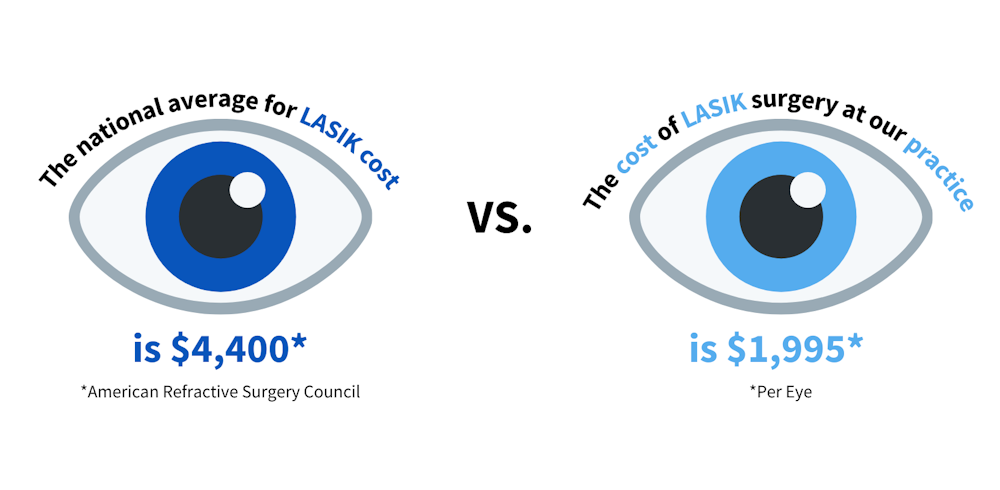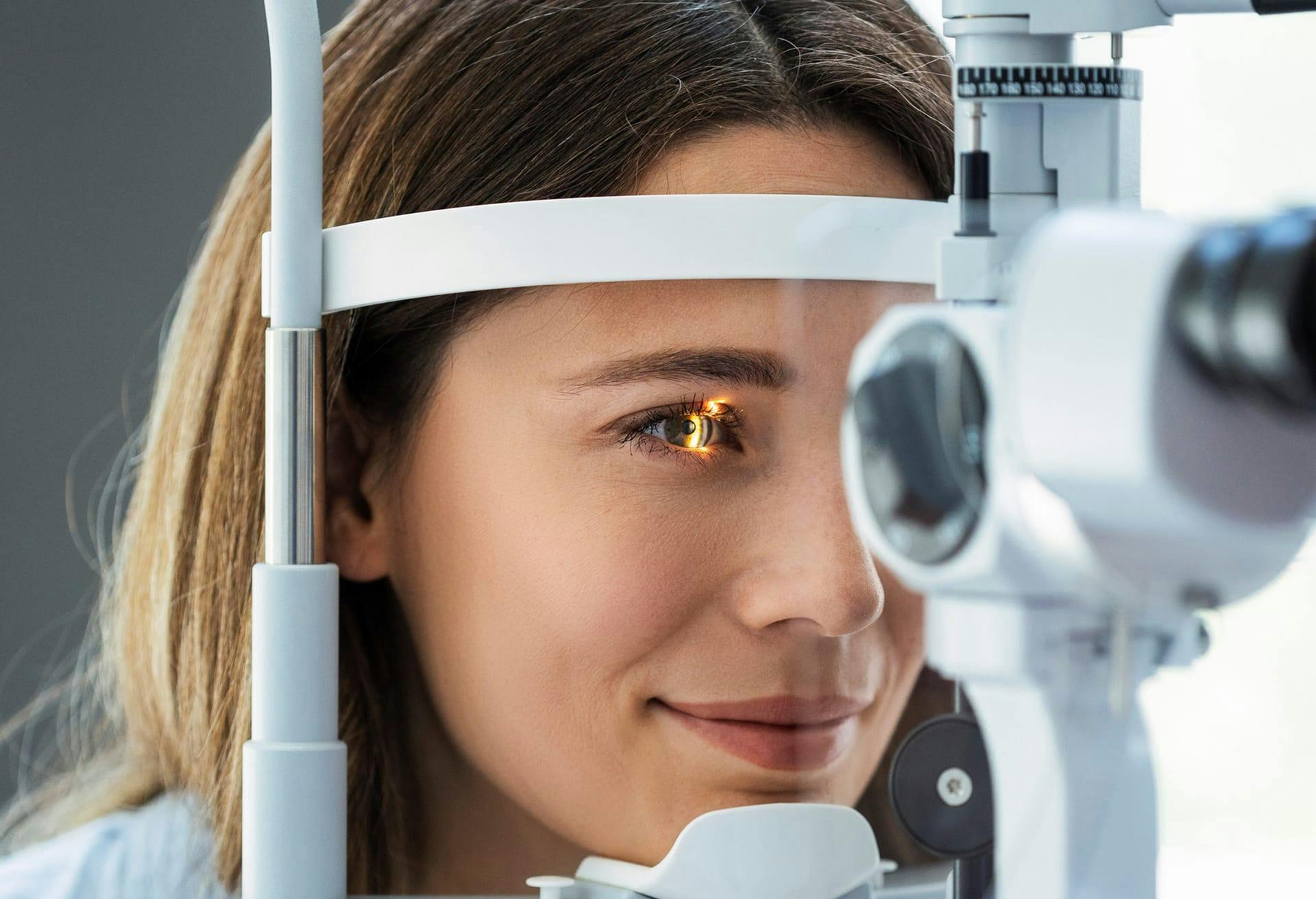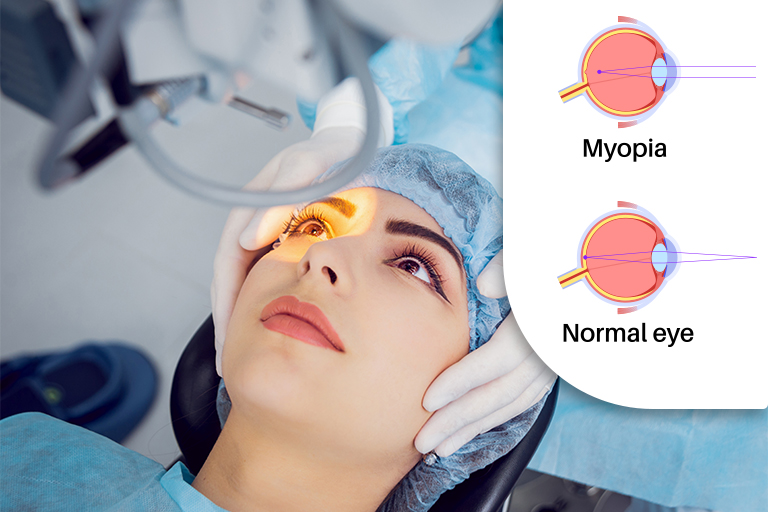How Long Do LASIK Results Last?
Laser-Assisted In Situ Keratomileusis (LASIK) is a surgical procedure designed to correct refractive errors by permanently reshaping the cornea. The alterations made during LASIK are intended to last a lifetime. However, it’s essential to understand that while the corneal changes are permanent, this doesn’t guarantee unchanging vision indefinitely.

Factors Influencing Post-LASIK Vision Changes
Several factors can cause vision changes after LASIK:
- Progression of Refractive Errors: In some individuals, conditions like myopia (nearsightedness), hyperopia (farsightedness), or astigmatism may continue to progress even after surgery, leading to changes in vision.
- Presbyopia: This age-related condition typically occurs around the age of 40, where the eye’s lens loses flexibility, making it challenging to focus on close objects. LASIK doesn’t prevent presbyopia, so individuals may require reading glasses as they age.
- Other Eye Conditions: Conditions such as cataracts or glaucoma can develop over time, affecting vision irrespective of previous LASIK surgery.
Longevity of LASIK Outcomes
The durability of LASIK outcomes varies among individuals. Studies have shown:
- A significant majority of LASIK patients remain satisfied with their vision even a decade after the procedure.
- Approximately 35% of individuals may require a LASIK enhancement within 10 years to maintain optimal vision.
- Another study indicated that about 10% of patients experienced age-related vision changes over 12 years post-LASIK.

Understanding the LASIK Procedure
LASIK involves using a laser to reshape the cornea, allowing light entering the eye to be properly focused onto the retina for clearer vision. The procedure addresses common refractive errors:
- Nearsightedness (Myopia): Clear vision up close but blurry at a distance.
- Farsightedness (Hyperopia): Clear vision at a distance but blurry up close.
- Astigmatism: Blurred vision due to an irregularly shaped cornea.
Procedure Details
- Preparation: Anesthetic eye drops are applied to numb the eye. An instrument holds the eyelids open.
- Flap Creation: A thin flap is created on the cornea’s surface using a microkeratome blade or femtosecond laser.
- Corneal Reshaping: An excimer laser removes precise amounts of corneal tissue based on the individual’s prescription.
- Flap Repositioning: The corneal flap is laid back in place, adhering naturally without stitches.
The entire procedure typically takes about 10-15 minutes per eye, with most patients noticing improved vision within 24 hours.

Cost Considerations
The cost of LASIK varies based on factors like location and the surgeon’s experience. On average, the procedure costs around $4,200 for both eyes. Since LASIK is often considered an elective procedure, many insurance plans do not cover it. However, financing options or utilizing Flexible Spending Accounts (FSA) or Health Savings Accounts (HSA) can help manage the expense.
Potential Risks and Side Effects
While LASIK is generally safe, it’s essential to be aware of potential risks and side effects:
- Dry Eyes: Temporary dryness is common post-surgery, but for some, it can persist longer.
- Visual Disturbances: Some patients may experience glare, halos, or double vision, especially in low-light conditions.
- Flap Complications: Issues with the corneal flap can occur, though they are rare with modern techniques.
- Undercorrection or Overcorrection: Some individuals might not achieve the desired vision correction and may require enhancement procedures.
Conclusion
LASIK offers a permanent solution to correct specific vision problems, significantly reducing dependence on glasses or contact lenses. However, natural aging processes and the progression of other eye conditions can influence vision over time. It’s crucial to have realistic expectations and maintain regular eye check-ups post-surgery. Consulting with a qualified ophthalmologist can provide personalized insights into the potential longevity of LASIK results based on individual eye health and lifestyle factors.
Note: This article is for informational purposes only and does not substitute professional medical advice. Consult with a licensed eye care professional for personalized recommendations.













